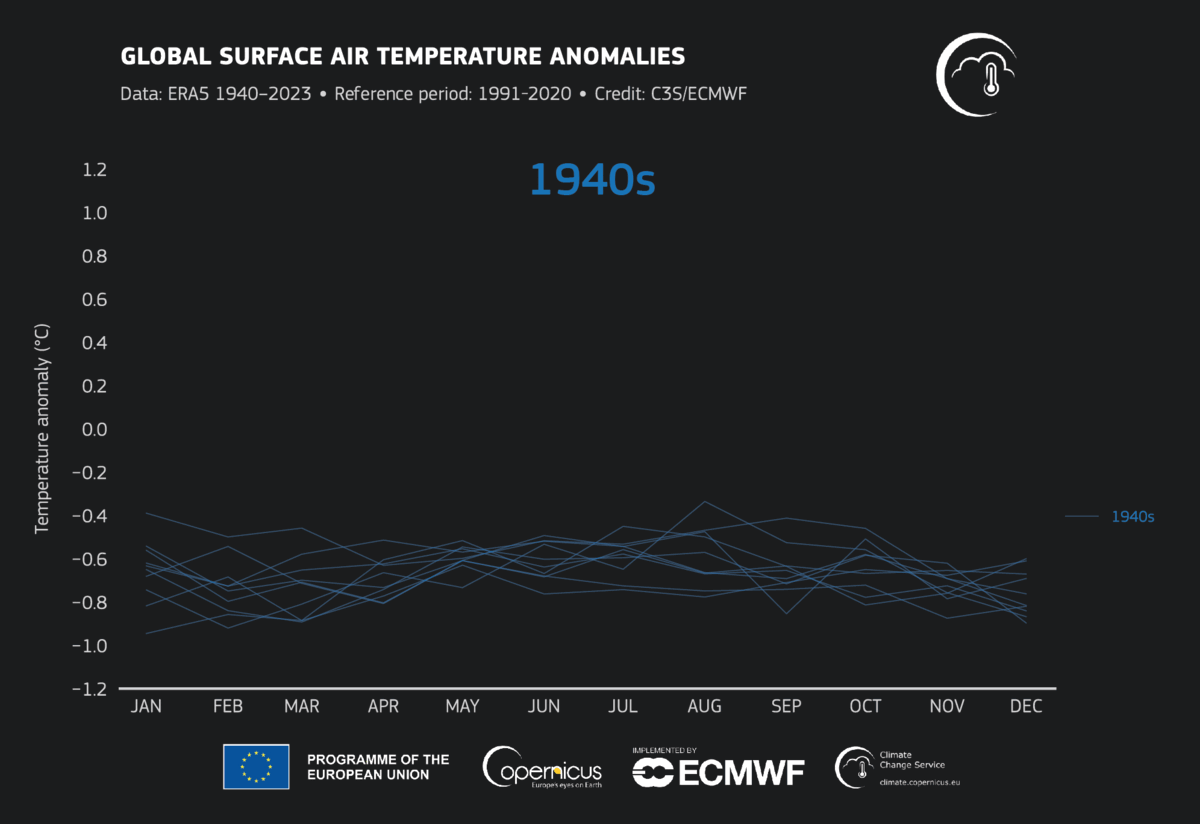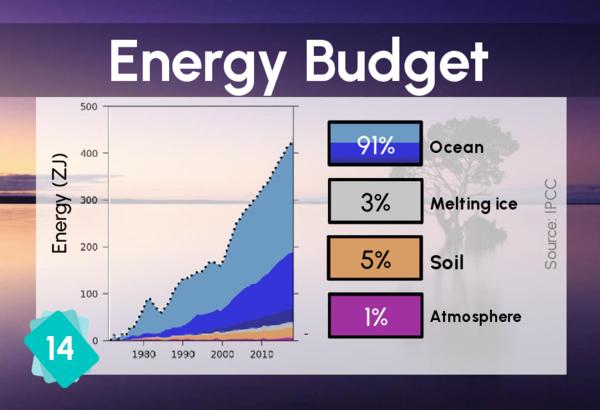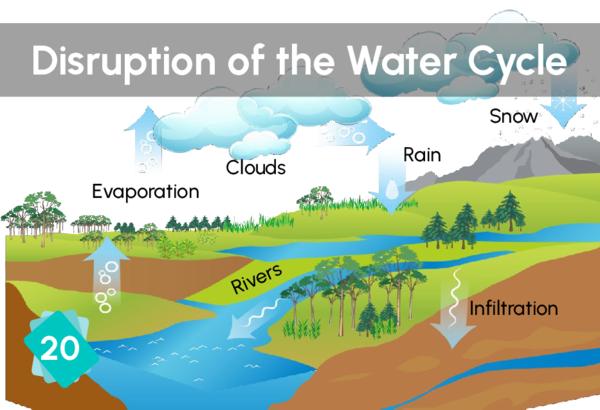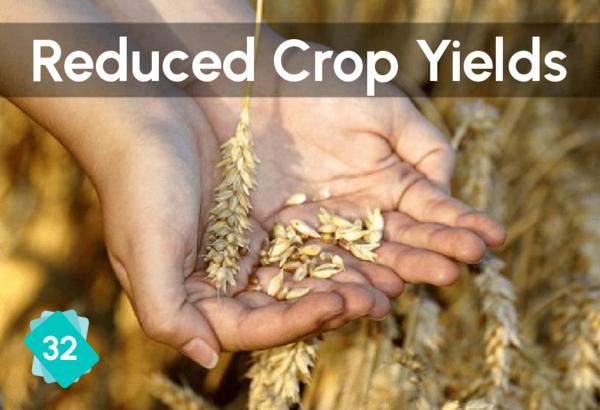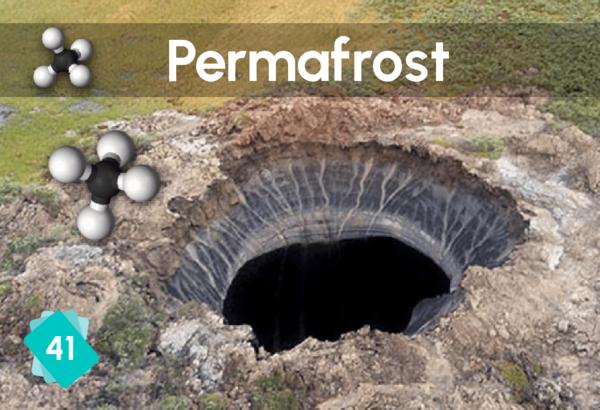21 - Rising Temperatures
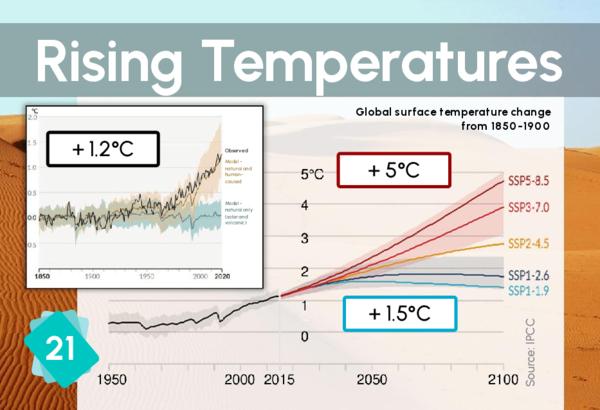
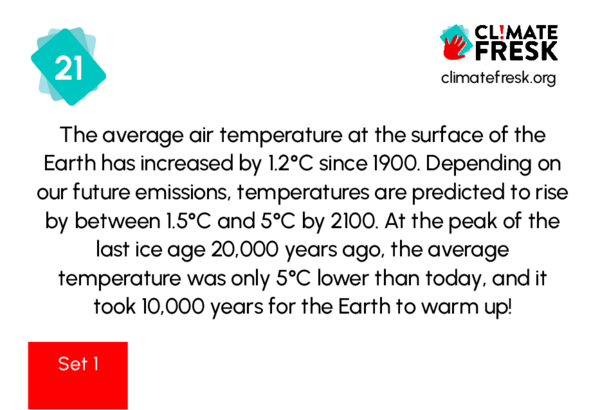
At the current rate of warming, 0.2°C per decade, the warming will reach 2°C between 2030 and 2050.
Earth from Space
Global temperatures reached exceptionally high levels in 2023 with record-breaking conditions such as the hottest month on record and daily global temperature averages briefly surpassing pre-industrial levels by more than 2°C. Unprecedented global temperatures from June onwards led 2023 to become the warmest year on record – overtaking by a large margin 2016, the previous warmest year.
Credits :© ESA/Copernicus Sentinel data (2023)
1Cause
As mentionned on card 21, this is the temperature of the air, above ground, in average on the Earth.
5Consequences
In northern countries, a little increase in temperature can lead to better yields, but in southern countries, it's the contrary: Any degree warmer is a decrease in yields.





